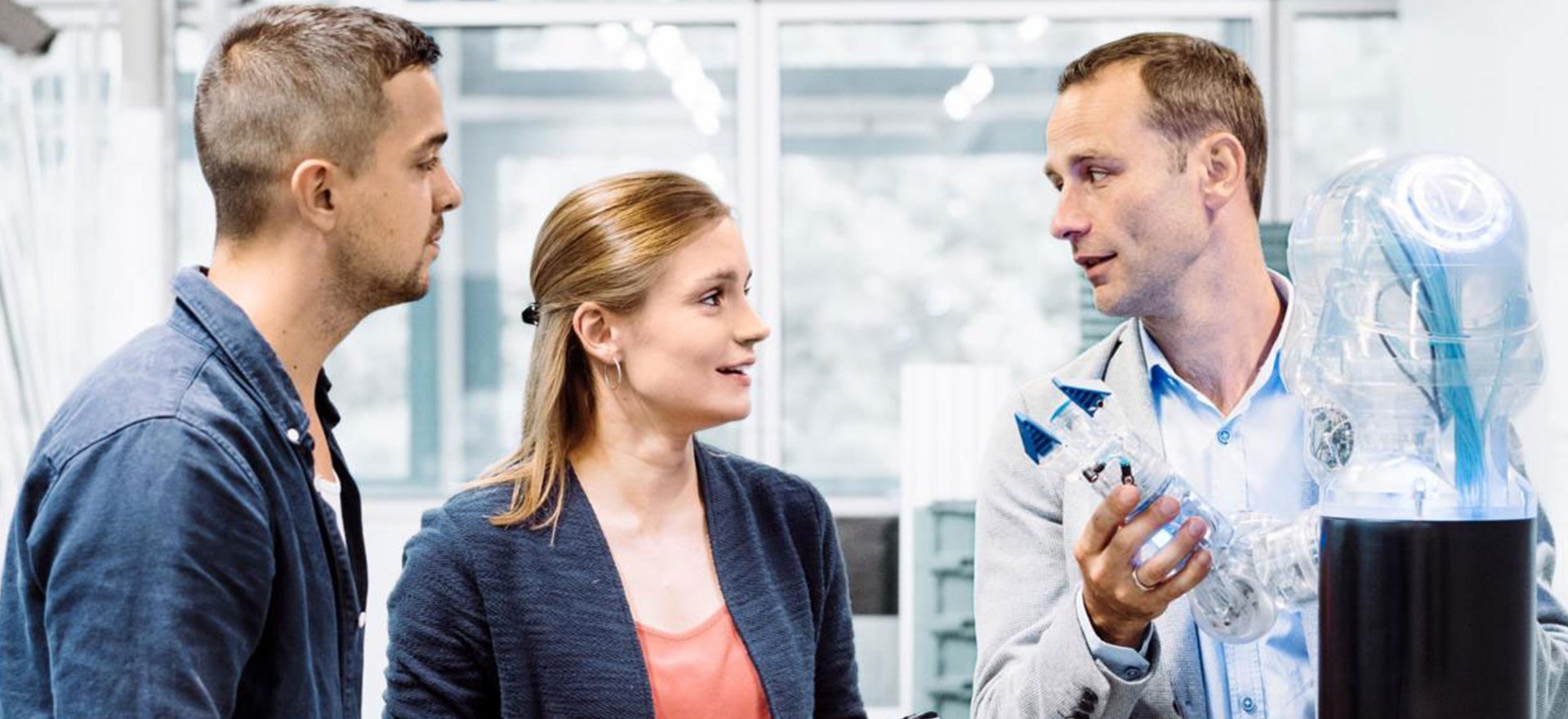

After investing considerable effort in the subject of bionics since the start of the 1990s, Festo founded the Bionic Learning Network in 2006.
The Bionic Learning Network is a collaboration by Festo with renowned universities, research departments, and small innovative companies. With the Bionic Learning Network, Festo leverages a “bionic” approach to solving problems in the automation industry. Furthermore, he Bionic Learning Network is closely linked to the innovative processes within our learning company, Festo Didactic, and demonstrates our commitment to technical education and training.
Learn more about our Bionic Learning Network!
Engineers use the engineering design process to guide them as they solve problems or create products. The first step in the design process is to identify the needs: who needs what because why.
At this stage, it helps to learn from the experiences of others, so performing some background research on existing solutions to similar problems is very important. The next step in the process is to brainstorm and develop possible solutions, and then select the best solution after analyzing each to determine which meets the design requirements.
An operating version of the solution (or prototype) is built, tested, and evaluated. The design process then involves multiple iterations and redesigns of the solution. Testing, redesigning, and changes are all part of the process of creating the final product.
During all phases of the design process, it is important that our team members remain confident and do not get discouraged, especially in the early prototyping stages when we share our initial designs with managers and other colleagues.
In addition to our innovative “bionic” approach to solving problems, collaboration between the interdisciplinary team members of the Bionic Learning Network is essential for our success.
The Bionic Learning Network’s core team consists of engineers, designers, computer scientists, biologists, and robotics specialists. Our team also collaborates with external partners from all over the world! This interdisciplinary approach offers new perspectives and inspiration. We learn from each other, gaining an understanding of how the different disciplines work together and interconnect.
Teams differ in relation to the tasks they are trying to achieve and the role each team member plays. Our teams perform a variety of tasks, from generating innovative ideas to problem solving to designing new products.
When our team works together on bionics projects, each of us contributes to the team’s effectiveness because we use our strengths and manage our weaknesses by fulfilling team roles correctly.
In addition to picking team members who are qualified for the roles they will fill, sometimes focusing on certain personality traits can help build the proper team for a specific project. When picking an interdisciplinary team for a bionics project, we ask “Who are the best individuals for the team?”.
Because we want to learn from nature, not copy it, our team from the Bionic Learning Network constantly asks, “What can nature teach us?”. Let’s take a look at what we have learned and how we applied this information.
core range